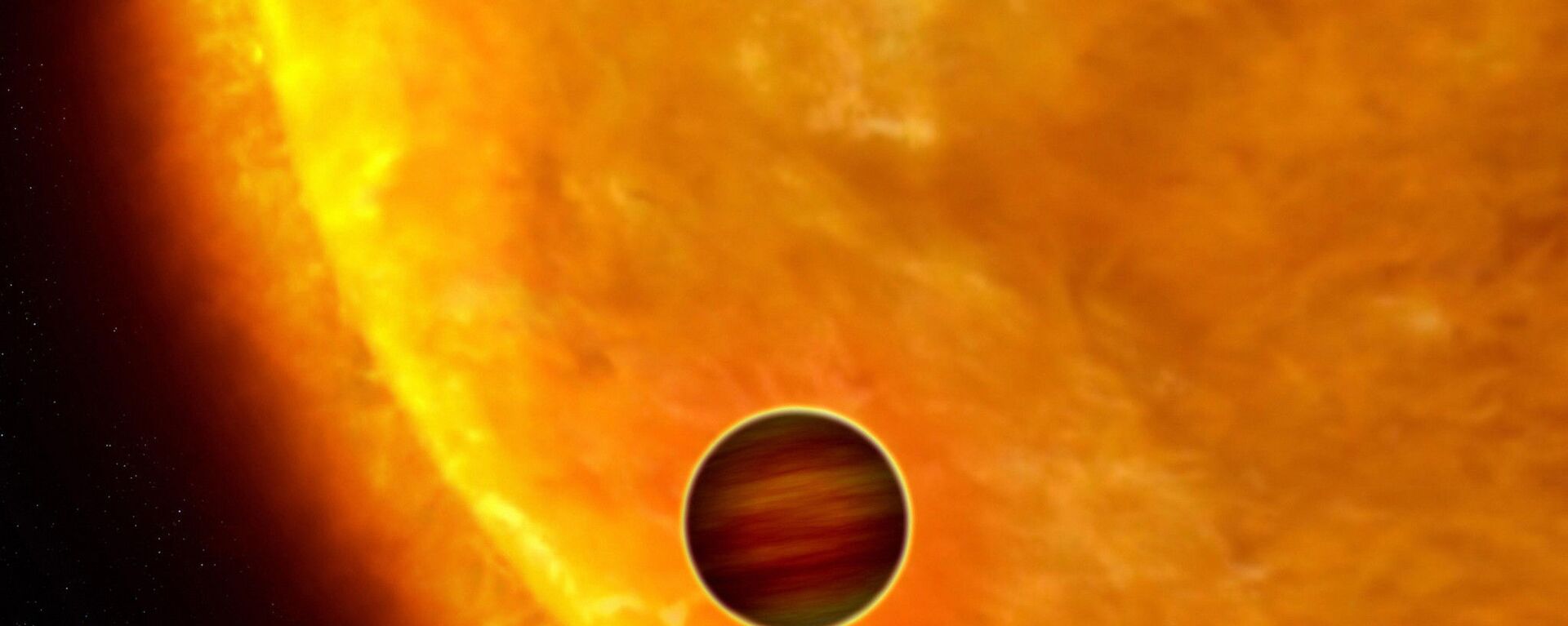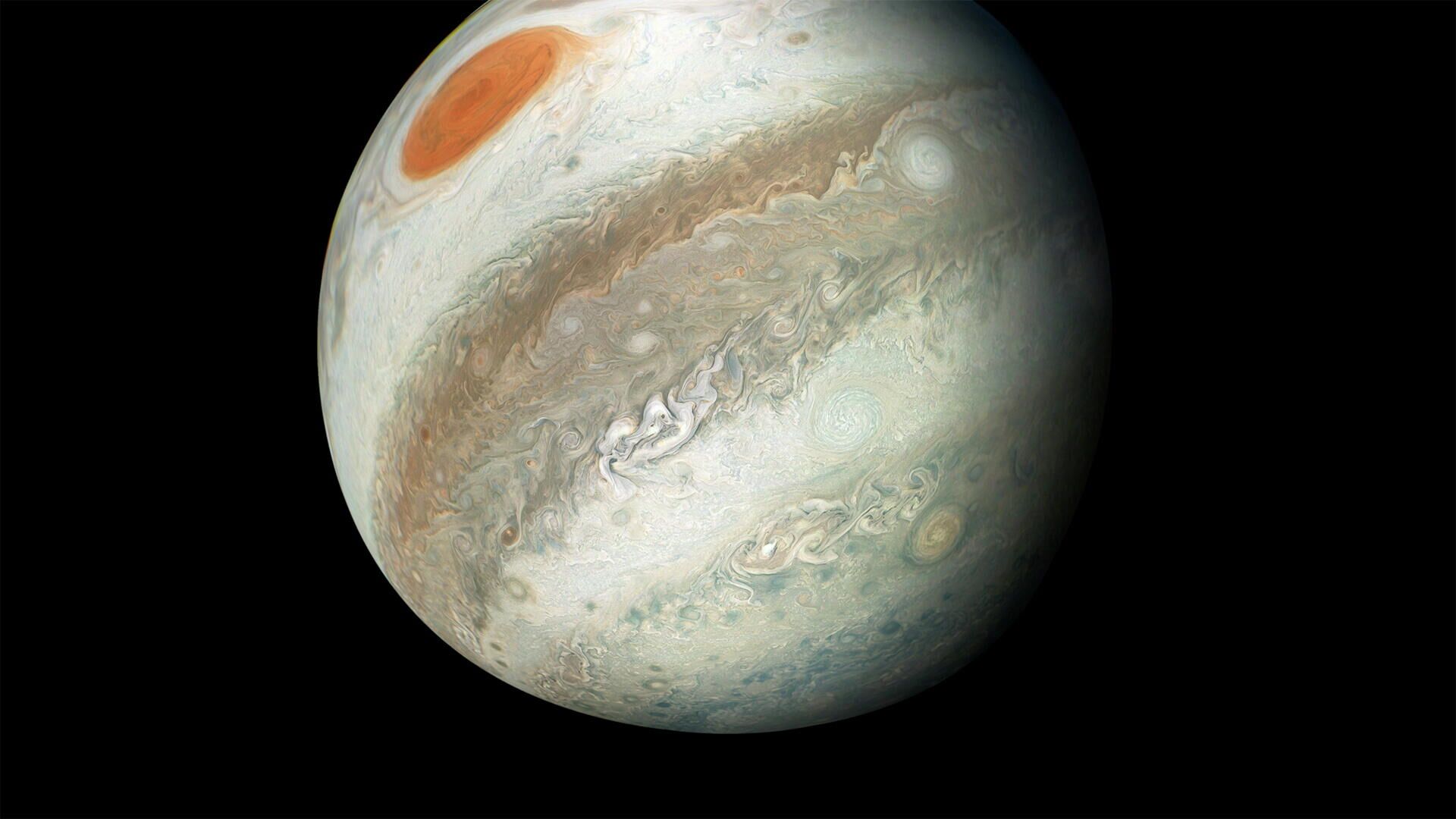https://sputnikglobe.com/20211028/nasas-juno-probe-looks-inside-stormy-jupiter-atmosphere-for-clues-on-solar-system-birth-1090292361.html
NASA’s Juno Probe Looks Inside Stormy Jupiter Atmosphere for Clues on Solar System Birth
NASA’s Juno Probe Looks Inside Stormy Jupiter Atmosphere for Clues on Solar System Birth
Sputnik International
WASHINGTON (Sputnik) - New findings from the Juno probe of Jupiter show the giant planet shrouded in zones and belts of swirling clouds, towering storms and... 28.10.2021, Sputnik International
2021-10-28T21:16+0000
2021-10-28T21:16+0000
2023-04-12T16:57+0000
science & tech
jupiter
spacecraft
atmosphere
solar system
space
https://cdn1.img.sputnikglobe.com/img/07e5/0a/1c/1090292284_0:0:1920:1080_1920x0_80_0_0_7db01d9ac8ebd15a810f3e015ea6df2a.jpg
Jupiter massive size indicates it was the first planet formed, Juno lead designer and principal investigator Scott Bolton said in a televised news conference.While it will likely provide time for scientists to digest the data and develop new theories on planet formation, the presentation offered a visual view not unlike a Vincent van Gogh painting.By providing a three-dimensional view of Jupiter’s atmosphere largely hidden between a layer of clouds, Juno found storms extending dozens of miles skyward and one storm over the planet’s iconic red spot 200 miles tall. Juno measured the depth of the spot itself at about 300 miles, NASA scientists said.Images showed cyclones and anticyclones spinning in opposite directions, along with distinctive belts and zones of white and reddish clouds that wrap around the planet like a series of jet streams.Multiple cyclones covered both the planet’s north and south poles, eight arranged in an octagonal pattern in the north and five in a pentagonal pattern in the south.Juno entered an elongated orbit of Jupiter’s atmosphere in 2016. The images displayed and data disclosed were collected during each of the spacecraft’s 37passes of the planet so far, according to NASA.
https://sputnikglobe.com/20211016/jupiter-like-planet-orbiting-dead-star-offers-glimpse-into-future-of-our-solar-system-1089961775.html
solar system
Sputnik International
feedback@sputniknews.com
+74956456601
MIA „Rosiya Segodnya“
2021
Sputnik International
feedback@sputniknews.com
+74956456601
MIA „Rosiya Segodnya“
News
en_EN
Sputnik International
feedback@sputniknews.com
+74956456601
MIA „Rosiya Segodnya“
Sputnik International
feedback@sputniknews.com
+74956456601
MIA „Rosiya Segodnya“
science & tech, jupiter, spacecraft, atmosphere, solar system, space
science & tech, jupiter, spacecraft, atmosphere, solar system, space
NASA’s Juno Probe Looks Inside Stormy Jupiter Atmosphere for Clues on Solar System Birth
21:16 GMT 28.10.2021 (Updated: 16:57 GMT 12.04.2023) WASHINGTON (Sputnik) - New findings from the Juno probe of Jupiter show the giant planet shrouded in zones and belts of swirling clouds, towering storms and cyclones spinning in opposite directions - clues that scientists hope will help explain how the solar system formed eons ago, NASA said on Thursday.
Jupiter massive size indicates it was the first planet formed, Juno lead designer and principal investigator Scott Bolton said in a televised news conference.
“When we study Jupiter, we’re taking a look at the very early part of the solar system. How did planets form? Where did we come from? How are solar systems made?” Bolton said.
While it will likely provide time for scientists to digest the data and develop new theories on planet formation, the presentation offered a visual view not unlike a Vincent van Gogh painting.
By providing a three-dimensional view of Jupiter’s atmosphere largely hidden between a layer of clouds, Juno found storms extending dozens of miles skyward and one storm over the planet’s iconic red spot 200 miles tall. Juno measured the depth of the spot itself at about 300 miles, NASA scientists said.

16 October 2021, 01:49 GMT
Images showed cyclones and anticyclones spinning in opposite directions, along with distinctive belts and zones of white and reddish clouds that wrap around the planet like a series of jet streams.
Multiple cyclones covered both the planet’s north and south poles, eight arranged in an octagonal pattern in the north and five in a pentagonal pattern in the south.
Juno entered an elongated orbit of Jupiter’s atmosphere in 2016. The images displayed and data disclosed were collected during each of the spacecraft’s 37passes of the planet so far, according to NASA.




